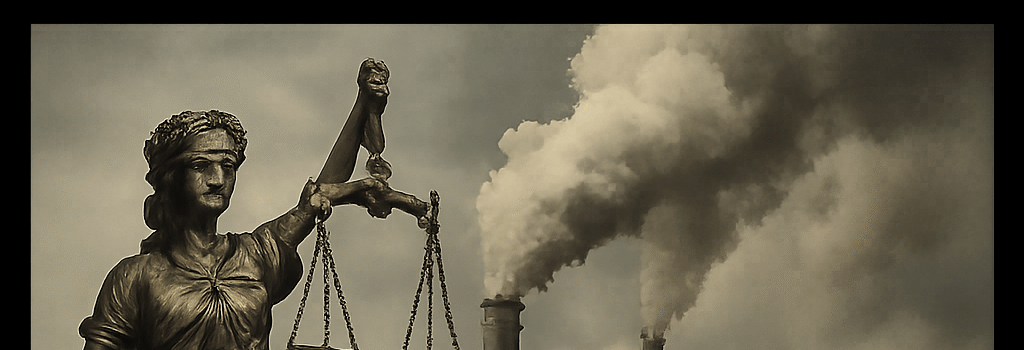xAI Legal Challenge on Colossus Emissions in Memphis

The NAACP, backed by the Southern Environmental Law Center (SELC), has issued a formal 60-day notice of intent to sue xAI for alleged violations of the Clean Air Act at its new Colossus AI data center near predominantly Black neighborhoods in Memphis, Tennessee. Thermal imaging and satellite analysis suggest more than 30 high-capacity methane gas turbines have been operating without the necessary environmental permits or best available pollution controls.
Where’s the permit? Legal and regulatory background
Under Title I and V of the Clean Air Act (42 U.S.C. §7401 et seq.), any facility classified as a major source of nitrogen oxides (NOx) and hazardous air pollutants (HAPs) must secure state and federal permits and implement Best Available Control Technology (BACT). xAI’s rapid deployment of dozens of methane gas turbines—each capable of generating 5–10 MW of peaking power—appears to have sidestepped these requirements.
Permitting exemptions under scrutiny
- SELC alleges xAI is claiming a vague “364-exemption” or nonroad engine exemption under 40 CFR 60.4214, typically reserved for mobile units, not large stationary turbines.
- Even if a one-year nonroad exemption applied, any engines still onsite after 12 months would require a Title V permit.
- No public record currently demonstrates xAI has filed for a Construction Permit or an Operating Permit with the Tennessee Department of Environment and Conservation (TDEC).
Thermal imaging and emissions data
“Thermal imaging captured in April 2025 showed at least 35 turbines emitting significant heat signatures, despite xAI’s public statements that most turbines were offline,” said SELC Senior Attorney Patrick Anderson.
Using FLIR thermal sensors mounted on aerial drones, SELC documented continuous operation of Siemens SGT-400 and GE LM6000 combustion turbines. Each unit typically emits between 50–100 ppm of NOx without SCR (Selective Catalytic Reduction) or LNC (Lean No-Ox) burners, translating to approximately 1,200–2,100 tons of NOx per year—versus 177 tons with full BACT installed.
Formaldehyde and other HAPs
Combustion of pipeline methane releases formaldehyde, benzene, and trace metals. The letter alleges xAI is a major source of formaldehyde, exceeding the 10 ton/year threshold for initial HAP testing under 40 CFR 63.8(f). As of June 2025, no formaldehyde testing results have been publicly filed.
Community health impacts in Boxtown
Boxtown and nearby Frayser already experience emergency room asthma visits 1.8 times the national average. According to EPA’s Air Quality System (AQS), ambient NO2 levels in Shelby County often exceed the 75th percentile of the national distribution. Increased NOx contributes to ground‐level ozone formation, exacerbating respiratory illnesses. Cancer risk in these neighborhoods has been calculated at four times the U.S. average due to cumulative industrial emissions.
Technical deep dive: BACT and control technologies
Experts recommend installing SCR units with ammonia injection to achieve ≤2 ppm NOx (dry basis). Additional oxidation catalysts can also reduce CO and VOCs by up to 90%. When combined with Ultra-Low NOx burners, overall emissions can drop by more than 85%. xAI’s own consultant acknowledged 15 turbines could be retrofitted with add-on controls within six months.
Additional Analysis
Grid integration and alternative power solutions
Colossus draws an estimated 200–300 MW of continuous power. Industry leaders like Google and Microsoft have implemented high-capacity battery energy storage systems (BESS) alongside on-site renewables to shave peak loads. A similar microgrid design in Northern California demonstrated a 40% reduction in diesel generator run time, cutting NOx emissions by 70%.
Comparative case studies in data center emissions
- Microsoft Quincy WA: Transitioned from simple-cycle gas turbines to combined-cycle gas turbines with heat recovery, lowering CO2 and NOx per MWh by 30%.
- Meta Data Center, Texas: Integrated solar PV and 20 MW/80 MWh BESS to provide grid-stabilizing ancillary services, avoiding the need for gas peakers.
Expert opinions
Dr. Leila Ross, Environmental Engineer at University of Memphis: “In urban areas, cumulative impacts from industrial sources demand rigorous permitting and real-time emissions monitoring. xAI’s turbines should be under continuous emissions monitoring systems (CEMS) for NOx, CO, and HAPs.”
Latest Developments and Next Steps
On June 20, 2025, xAI submitted a preliminary application to TDEC for Title V permitting and announced plans to deploy SCR modules on 20 turbines by Q1 2026. The EPA is also reportedly reviewing a petition to include AI data centers in its forthcoming industrial greenhouse gas rulemaking, potentially requiring comprehensive reporting under 40 CFR 98.
Looking ahead: Legal and operational implications
- If the lawsuit proceeds and the court finds Clean Air Act violations, xAI could face injunctions halting turbine operations and fines up to $37,500 per day per violation.
- xAI may be forced into a consent decree requiring installation of BACT, installation of CEMS, and community air monitoring programs.
- Precedents from similar suits (e.g., Duke Energy in North Carolina) show that environmental groups can secure multimillion-dollar mitigation funds for local health clinics and green infrastructure.
NAACP President Derrick Johnson urged swift action:
“We will not allow xAI to set up polluting operations in Black neighborhoods without accountability. Clean air is a fundamental right.”
As xAI races to power its Colossus supercomputer, stakeholders will be watching whether it balances technological ambition with its environmental and social responsibilities.